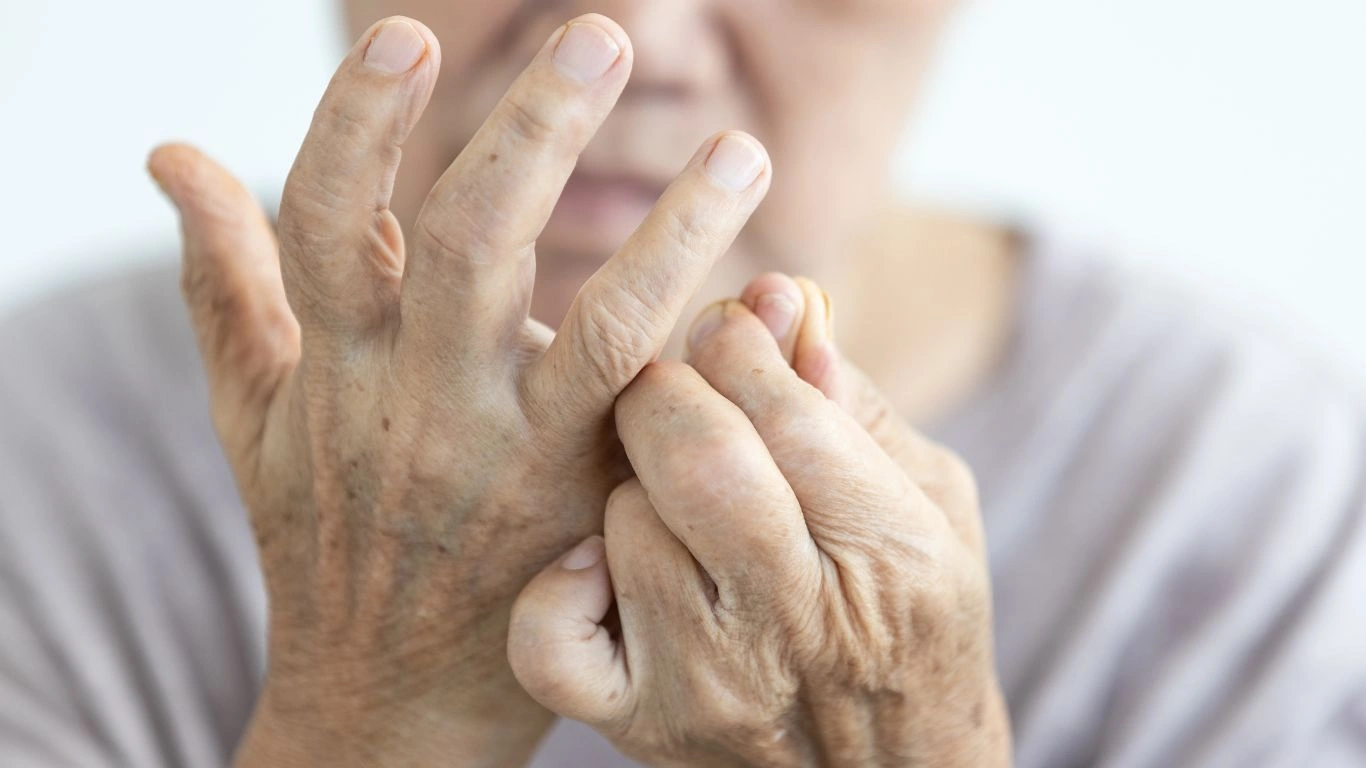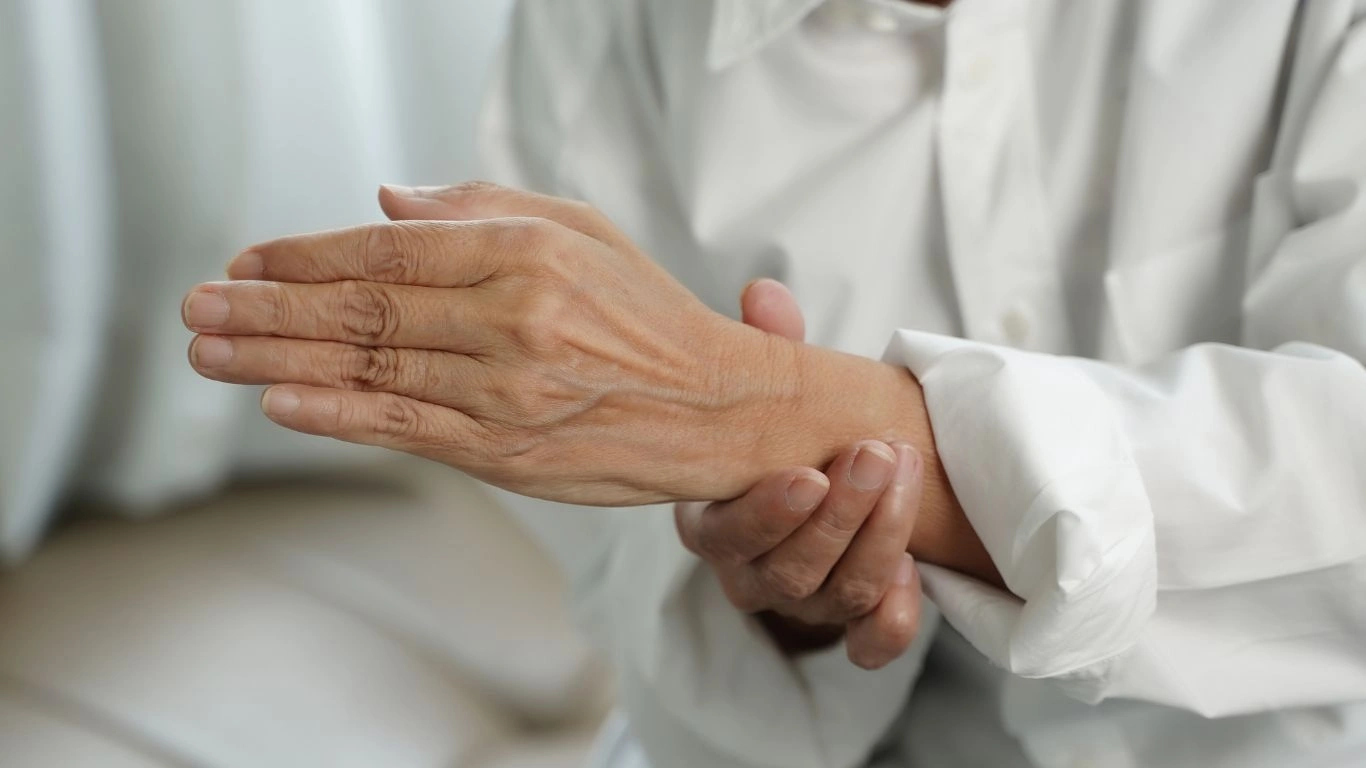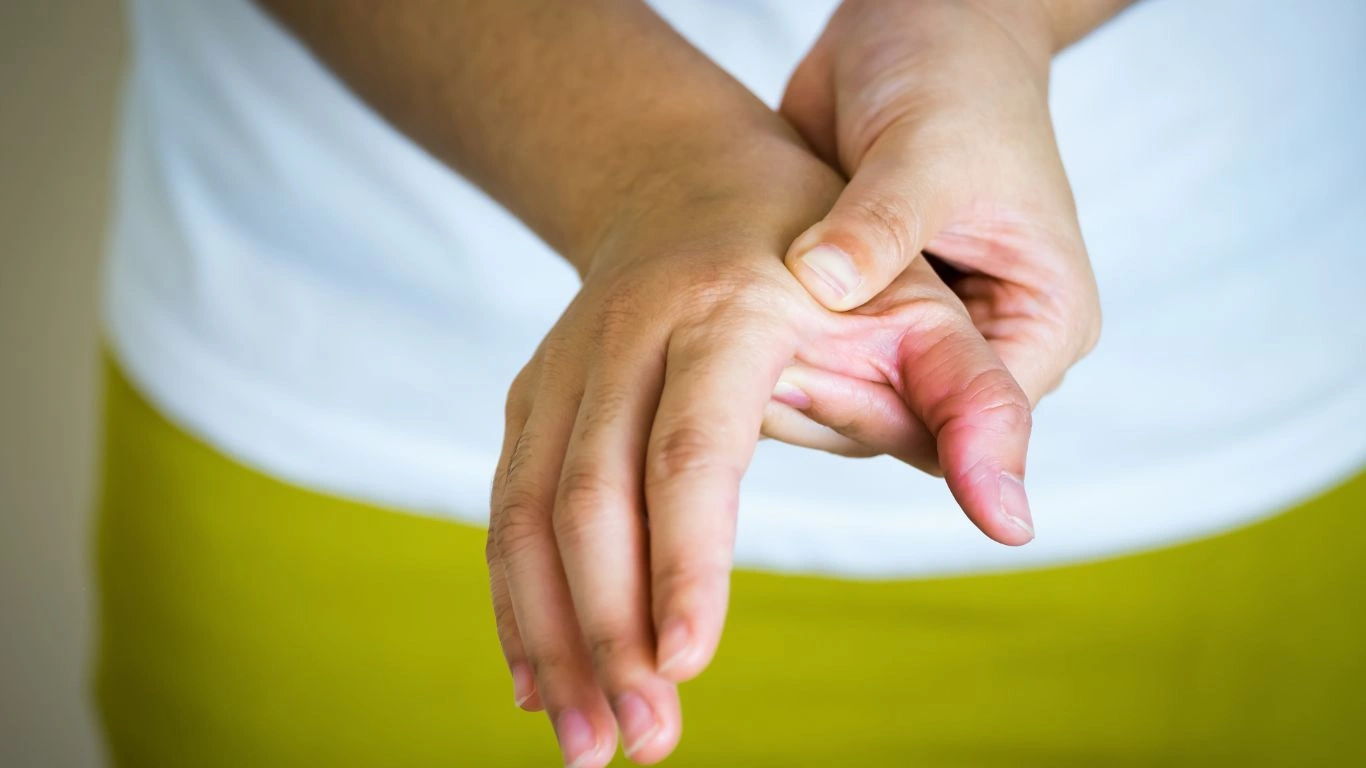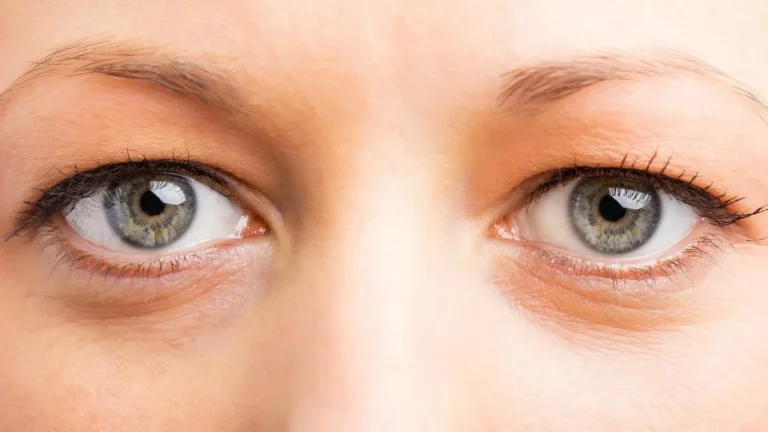Best Post-Workout Recovery Methods for Rheumatoid Arthritis Recovery
If you’re living with rheumatoid arthritis (RA), you know how challenging it can be to stay active and maintain a healthy lifestyle. The pain and stiffness from joint inflammation can sometimes make it feel like working out is out of the question. But here’s the truth: staying active is one of the best things you can do for managing your RA, as it helps to improve joint function, reduce inflammation, and boost overall well-being. However, after an intense workout, your body needs special attention for recovery. Whether you’re an experienced athlete or just trying to stay fit, understanding the best post-workout recovery methods for those with RA is crucial for helping your body heal and get back to doing what you love. In this article, I’ll be sharing some personal insights and effective strategies for managing post-workout recovery when dealing with rheumatoid arthritis. Let’s dive into it!
Understanding Rheumatoid Arthritis and Its Impact on Exercise

Rheumatoid arthritis is a chronic autoimmune condition where your immune system mistakenly attacks the joints, leading to inflammation, pain, and damage. The joints, particularly in the hands, wrists, knees, and feet, are most commonly affected. While this condition can make physical activity feel daunting, it’s actually recommended to stay active to help alleviate symptoms and prevent further joint damage. But, as someone who’s been in the field for years as a Rheumatology Nurse Practitioner, I can tell you that there’s a right way to go about it – especially when it comes to post-workout recovery.
Exercise can be incredibly beneficial for individuals with RA, but the key is knowing how to listen to your body, choose the right type of exercise, and prioritize recovery methods that support your joints and muscles. If you’re hitting the gym or going for a run, it’s important to incorporate recovery strategies to minimize stiffness and soreness. I’ll share some of my tried-and-true recovery techniques that I recommend to my patients who are managing rheumatoid arthritis while staying active.
What Happens to Your Body During and After Exercise with RA?

When you exercise, your muscles are put under stress, and that stress can lead to tiny tears in the muscle fibers. This is normal, and it’s how your muscles grow and strengthen. However, for someone with RA, your immune system is already triggering inflammation, which can intensify the natural effects of exercise on the body. For some, this can result in joint pain, fatigue, or even flare-ups of their RA symptoms after a workout.
It’s important to realize that while exercise is good for your joints and can reduce inflammation in the long run, post-workout recovery becomes even more critical for people with RA. If you don’t give your body enough time to heal, it can lead to exacerbated symptoms, longer recovery times, and sometimes even long-term joint damage. That’s why focusing on recovery methods that reduce inflammation and promote healing is key.
How to Optimize Post-Workout Recovery When You Have RA
When it comes to post-workout recovery for individuals with rheumatoid arthritis, there are a few strategies that can make a huge difference. Below are my top methods that I’ve shared with my patients over the years. These tips not only help to manage RA symptoms but also speed up recovery after physical activity.
1. Gentle Stretching and Mobility Work
Stretching after a workout is a great way to improve flexibility and mobility, especially for those with RA. However, it’s important to approach stretching gently. Overextending or forcing a stretch can aggravate your joints, so be sure to focus on slow and controlled movements. Gentle stretches can help to alleviate tightness in your muscles and prevent stiffness, which is common for those with rheumatoid arthritis.
- Tip: Focus on stretches that target major muscle groups, including your back, legs, and arms, but always listen to your body. If something feels too intense, ease up.
- Benefit: This helps improve your range of motion, which is crucial when RA impacts joint movement.
2. Ice and Heat Therapy
Another tried-and-true method for post-workout recovery is the use of ice and heat therapy. Ice can help to reduce inflammation and numb any pain in the joints, while heat can promote blood flow to stiff muscles and joints, helping them to relax. These two therapies should be used strategically depending on your symptoms.
- Use Ice: Immediately after intense exercise or if you notice swelling around your joints. Apply for about 15-20 minutes.
- Use Heat: When muscles feel tight or you’re experiencing muscle soreness, heat can help relax the muscles and alleviate discomfort.
3. Hydration Is Key
Staying hydrated is critical for everyone, but it’s especially important for people with RA. Exercise causes your body to lose fluids through sweat, and without replenishing these fluids, you may increase your risk of muscle cramps or even joint stiffness. Drinking water or an electrolyte-rich drink after a workout helps to maintain fluid balance and prevent further dehydration, which can exacerbate RA symptoms.
- Tip: Aim to drink at least 8-10 cups of water a day, and consider drinking a hydrating beverage that includes electrolytes post-workout.
- Benefit: This helps to flush out toxins and supports joint lubrication.
4. Nutrition for Joint Health and Muscle Repair
Another crucial aspect of recovery is fueling your body with the right nutrients. After a workout, your body needs protein to repair muscle tissues and healthy fats to support joint health. Omega-3 fatty acids, in particular, have anti-inflammatory properties that can help reduce RA symptoms.
- Focus on Anti-Inflammatory Foods: Incorporate foods like salmon, chia seeds, walnuts, and leafy greens to support your joints.
- Protein: Ensure you’re getting enough protein to aid muscle recovery, such as lean meats, beans, or plant-based protein sources.
Active Recovery Techniques for RA: Low-Impact Options

When you’re managing rheumatoid arthritis, it’s essential to choose low-impact exercises that provide the benefits of physical activity without placing too much stress on your joints. As a Rheumatology Nurse Practitioner, I’ve seen patients find great success with these types of activities. Not only do they improve muscle strength and flexibility, but they also help you recover more effectively, allowing you to stay active without aggravating your RA symptoms.
Here are a few low-impact exercises that are excellent for RA recovery:
- Swimming: This is one of the best exercises for those with RA because the buoyancy of the water reduces stress on the joints while providing a full-body workout. Swimming can improve cardiovascular health, joint mobility, and muscle strength.
- Cycling: Whether outdoors or on a stationary bike, cycling is a great low-impact option that boosts circulation, strengthens the lower body, and can be adapted to fit your fitness level.
- Yoga and Pilates: These exercises focus on improving flexibility, balance, and core strength. They’re great for RA sufferers as they help with joint mobility while being gentle on the body.
The key here is consistency. Low-impact exercises not only aid in your overall fitness but can help to reduce the risk of flare-ups, promote healing, and improve your range of motion. I always recommend my patients keep things moderate and listen to their bodies—pushing yourself too hard, especially when you have RA, can do more harm than good.
5. The Power of Rest and Sleep
It might seem counterintuitive, especially when you’re working on your fitness, but rest and sleep are just as important for recovery as exercise itself—particularly for those with rheumatoid arthritis. RA already puts a strain on your body, and if you’re not giving it time to rest and recover, you’re more likely to experience increased inflammation and fatigue.
As a nurse practitioner, I often remind my patients that rest isn’t just about taking it easy after a workout—it’s about ensuring that your body has enough time to repair and rebuild muscle tissue and replenish your energy stores. Sleep plays a crucial role in this process too, as it helps to regulate the body’s immune response and reduce inflammation. Not getting enough quality sleep can trigger RA flare-ups and slow your recovery process.
- Tip: Aim for 7-9 hours of sleep per night, and create a sleep-friendly environment by limiting screen time before bed and keeping your bedroom cool and dark.
- Rest: If you’re feeling particularly fatigued after a workout, don’t hesitate to take a day off to give your body time to recover fully. Rest days are vital to avoiding overuse injuries and managing RA symptoms.
6. Anti-Inflammatory Supplements and Medications
When you have RA, managing inflammation is key to reducing joint pain and improving recovery time. While medications prescribed by your doctor, like non-steroidal anti-inflammatory drugs (NSAIDs), can help, there are also natural supplements that may assist in reducing inflammation post-workout.
Turmeric (curcumin) is one of the most widely recognized anti-inflammatory supplements. It contains powerful compounds that can help reduce the inflammation associated with RA. In my clinical practice, I’ve seen patients who use turmeric regularly alongside their prescribed treatments experience a noticeable reduction in joint pain and stiffness.
Another supplement worth considering is omega-3 fatty acids, found in fish oil or plant-based sources like flaxseeds. Omega-3s have been shown to lower levels of inflammatory markers in the body, which can help ease the pain and swelling of RA. Just be sure to talk to your doctor before starting any new supplements, as they may interact with your medications or other health conditions.
If you’re looking for a more immediate solution to inflammation, ice therapy (mentioned earlier) is a tried-and-true method, but for ongoing management, these supplements can be effective in reducing the overall inflammatory burden on your body.
7. Massage and Myofascial Release

Massage therapy can be incredibly helpful for reducing muscle tension, improving circulation, and enhancing joint mobility. For those with RA, therapeutic massage can also be an excellent way to alleviate discomfort in the soft tissues surrounding the joints.
In my practice, I often suggest myofascial release, a technique that targets the fascia (the connective tissue surrounding muscles) to relieve tightness. This approach is particularly useful for individuals with RA who experience muscle stiffness due to altered movement patterns caused by joint pain. A skilled massage therapist who understands RA can adjust pressure and techniques to avoid aggravating any tender or swollen joints.
Self-massage tools, like foam rollers or massage balls, are also a great option to incorporate into your recovery routine. These tools help to relieve tension in the muscles and improve flexibility, both of which are essential for keeping your joints healthy and functional.
8. Listen to Your Body: Finding the Balance
One of the most important pieces of advice I can give you when it comes to post-workout recovery with RA is to listen to your body. When you have rheumatoid arthritis, it’s essential to recognize the difference between normal post-exercise soreness and pain that could signal a flare-up or injury.
Remember, the goal isn’t to push yourself to the max every time you work out. Instead, aim for consistency and gradual improvement. If you feel persistent pain or discomfort during a workout or recovery period, it might be a sign that you need to adjust your exercise routine or recovery strategy. Don’t be afraid to back off if your body needs a rest. Staying active is important, but so is knowing when to give your joints a break and let them heal.
By finding the right balance between exercise, recovery, and rest, you can not only manage RA more effectively but also maintain an active and fulfilling lifestyle. Whether it’s adjusting your workout intensity, incorporating anti-inflammatory foods, or simply prioritizing rest, taking care of yourself will pay off in the long run.
Recovery Routine: Tailoring It to Your Needs

Ultimately, your post-workout recovery routine should be personalized to your body and your RA symptoms. Every person’s experience with rheumatoid arthritis is different, so it’s important to tailor your recovery plan to meet your unique needs. If you’re unsure about what might work best for you, I always recommend consulting with your healthcare provider or a physical therapist who specializes in RA. They can help you build a safe and effective recovery plan that works alongside your treatment regimen.
Whether you incorporate these strategies or find others that resonate with your body, always remember that the most important thing is to stay consistent, listen to your body, and be patient with yourself. Progress might take time, but every small effort you put into your recovery can lead to long-term benefits for your joint health and overall well-being.
Creating a Consistent Post-Workout Recovery Routine

Consistency is key when it comes to post-workout recovery, especially for those with rheumatoid arthritis. I can’t emphasize enough how important it is to develop a recovery routine that works for your body and stick with it. It may feel tempting to push through soreness or skip certain recovery practices, but consistency over time will yield the best results in terms of joint health, muscle repair, and overall fitness.
As someone who’s worked with patients managing RA for many years, I’ve seen firsthand how a tailored recovery routine can make a huge difference in maintaining an active lifestyle. Some of the most successful patients I’ve worked with are those who’ve learned to balance their exercise routine with solid post-workout recovery strategies, such as those I’ve mentioned previously.
One of the most critical aspects of consistency is ensuring that you’re giving your body time to heal without overdoing it. You don’t need to stick to the same recovery routine every single day, but it’s important to incorporate certain practices regularly. For example, ice or heat therapy, gentle stretching, and rest should become a natural part of your routine after any intense physical activity. You don’t need to perform these practices all day long, but consistently making them part of your post-workout process will help your body recover more efficiently.
How to Avoid Overtraining with RA
Overtraining can be a real concern for individuals with RA, as pushing too hard or too often can lead to flare-ups and increase inflammation. It’s crucial to recognize the warning signs of overtraining—such as fatigue, joint swelling, and persistent soreness—and adjust your workouts accordingly. I often tell my patients with RA that it’s important to approach exercise like a marathon, not a sprint. This means pacing yourself and being mindful of how your body feels before, during, and after exercise.
In my experience, the best way to avoid overtraining is to implement progressive overload in your workouts. This approach involves gradually increasing the intensity of your exercises over time rather than making drastic changes all at once. For example, if you’re walking or swimming, you can start with a shorter duration or lower intensity and gradually increase it as your strength and endurance improve. This method ensures that your body can handle the added stress without causing undue strain on your joints.
Additionally, make sure to include plenty of rest days in your weekly routine. Rest doesn’t just mean lying on the couch—it can involve light activities like walking or gentle yoga to keep your body moving without overburdening your joints. The key is to find that sweet spot between exercise and recovery, where you’re challenging your body enough to improve but not so much that it leads to setbacks.
The Role of Mental Health in RA Recovery
As someone who has worked with many RA patients, I can tell you that mental health plays a significant role in managing rheumatoid arthritis and recovering from workouts. The emotional toll of living with a chronic condition like RA can be immense, and it can sometimes make it harder to stay motivated or positive about your fitness journey. But the mental benefits of exercise and recovery are just as important as the physical ones.
Exercise is known to release endorphins, the “feel-good” hormones that can boost your mood and reduce stress. Even a low-intensity workout can help improve your mental clarity and decrease anxiety. On the flip side, not taking care of your body’s recovery needs can lead to frustration, which can negatively affect your mental health and overall well-being.
That’s why it’s important to prioritize mental wellness as part of your overall recovery plan. In my practice, I often encourage patients to incorporate stress-reducing practices into their routine, such as mindfulness meditation, deep breathing exercises, or simply spending time outdoors. Taking care of your mind helps you stay more positive and motivated during your recovery process and can ultimately lead to better outcomes for both your body and your mental health.
Seeking Professional Guidance for a Personalized Recovery Plan
While many of these recovery strategies are effective for managing RA symptoms, it’s essential to work closely with your healthcare provider or a physical therapist to develop a personalized recovery plan. Every person’s experience with rheumatoid arthritis is different, so what works for one person might not work for another. That’s why professional guidance is so important to ensure that you’re taking the right steps for your specific needs.
If you’re new to exercising with RA or trying to find a better post-workout recovery strategy, seeking a personalized plan can be incredibly beneficial. A physical therapist, for example, can help you assess your current fitness level, recommend specific exercises, and guide you in safe movement patterns that won’t worsen your symptoms. Your healthcare provider may also help you adjust your medications and recommend additional treatments, such as occupational therapy, that can further improve your quality of life.
One thing I often recommend to my patients is to keep a fitness and recovery journal. Tracking your progress, how your body feels during and after workouts, and any flare-ups or symptoms you experience can help you identify patterns and make more informed decisions about your routine. This journal can also be helpful when discussing your recovery strategy with your doctor or therapist, allowing you to make any necessary adjustments based on real-time feedback.
References
Disclaimer
The information provided in this article is for educational purposes only and is not intended as medical advice. Please consult with your healthcare provider before beginning any new exercise routine or making significant changes to your post-workout recovery practices. Always follow the guidance of your doctor or a qualified health professional, especially if you have rheumatoid arthritis or any other chronic condition. Results may vary based on individual circumstances.

Tarra Nugroho is a dedicated Nurse Practitioner with a strong foundation in family and preventive care. She brings both compassion and clinical expertise to her practice, focusing on patient-centered care and health education. As a contributor to Healthusias.com, Tarra translates medical knowledge into clear, empowering articles on topics like women’s health, chronic disease management, and lifestyle medicine. Her mission is simple: help people feel seen, heard, and informed—both in the clinic and through the content she creates. When she’s not caring for patients, Tarra enjoys weekend hikes, plant-based cooking, and curling up with a good health podcast.






